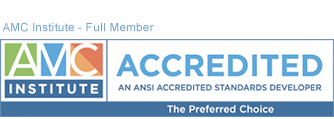Another in a series of articles related to association management selected from our reading list by:
Robert O. Patterson, JD
CEO/ Principal
The Center for Association Resources, Inc.
Benchmarking is a measurement tool non-profits can use to gauge both their successes and areas for improvement. It can be defined as the standard of excellence by which other activities should be judged.
Though benchmarking was first used by corporations, it is a useful tool for non-profits to adopt. Activities involved include goal setting, comparative measurement, and identification and implementation of best practices. Other key benchmarking activities include defining successful outcomes for services rendered, gathering lessons learned, and then defining and applying best practices from these lessons. Determining what measurements are meaningful is a vital part of the process.
A non-profit can use benchmarking to compare its current performance against the past, or to that of similar non-profits. The scope of the benchmarking can include all aspects of the organization, from fundraising, to administrative costs, to providing services relevant to the organization’s mission. While a lot of the benchmarking results will be for internal use, one measurement interested publics will want to know about is the percentage of administrative costs vs. percentage of funds used to provide services. If an organization establishes benchmarks that show it is keeping the percentage constant or low, it can use this information as a powerful data point during fundraising drives.
Another key measurement for organizations is how well they are implementing services crucial to the organization’s mission. For instance, a human services organization could poll the consumers of their services to find out what aspects worked well and which need improvement. Benchmarks ideally should be specific and measurable. Vague benchmarks will be difficult to measure and will likely not provide useful information.
Top levels of the non-profit often need to lead the way toward benchmarking. Those in the trenches providing services often do not immediately see the need for it, as it consumes time that could be spent on mission-critical activities. Challenges for establishing and implementing benchmarking activities include overcoming individuals’ resistance to change as well as defining measurement and success for disparate or complex activities. Involving field personnel in the benchmarking process may facilitate overcoming some of these challenges.
Benchmarking for non-profits is not a one-size-fits-all endeavor. The organization’s culture, mission and location must be considered. For instance, a non-profit whose mission focuses on the fine arts may have very different benchmarks from one servicing basic human needs such as sanitation or health care. An analysis of needs vs. goals should be performed with the unique circumstances of the organization in mind.
Once internal benchmarking has been completed, communicating the results with stakeholder audiences can increase public confidence in the efficiency and effectiveness of the organization. But benchmarking should not be just an internal exercise. Public perception of the organization’s effectiveness is also an important item to gauge. Feedback gathered from surveys, focus groups and online comments can be used to measure how the organization’s activities are perceived by the community at large. Positive public perception can have a direct impact on donations, so this is an important area to monitor.
Though benchmarking requires a well-thought-out plan, time and commitment of resources – and sometimes challenges – the potential for internal improvement and positive public reputation make the time spent worthwhile.







